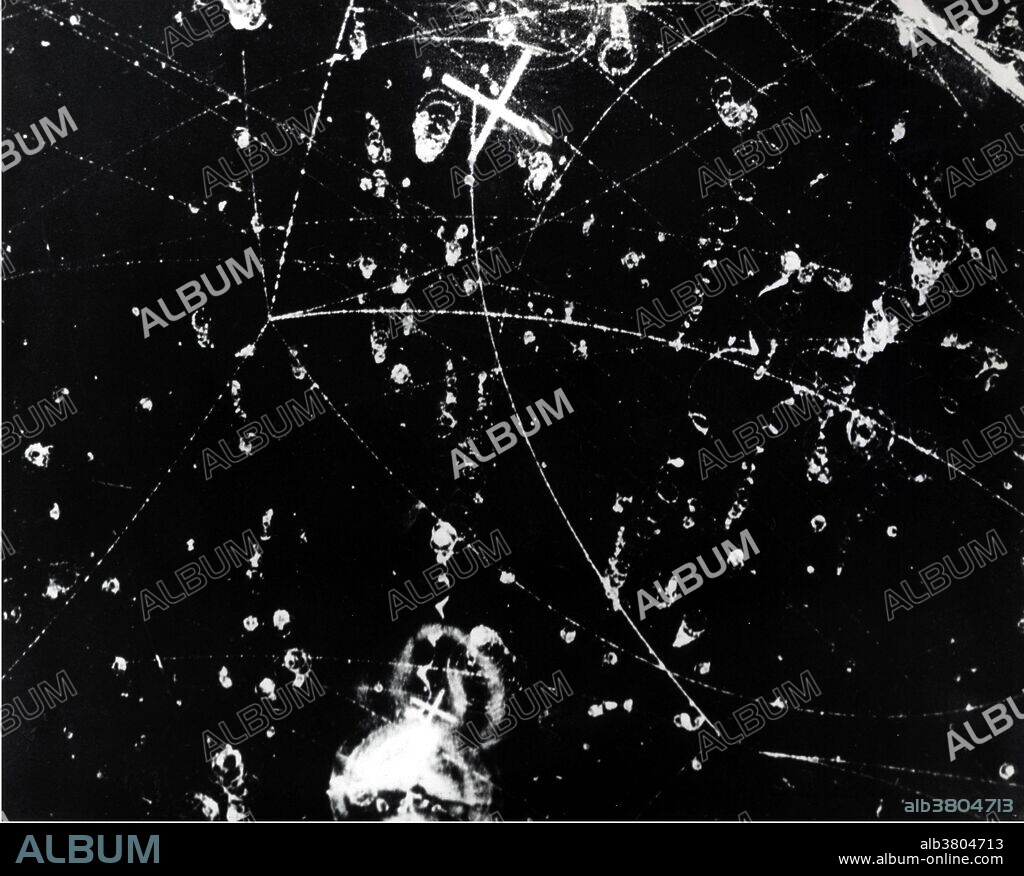alb3804713
Negative K Mesons, Bubble Chamber Event

|
Zu einem anderen Lightbox hinzufügen |
|
Zu einem anderen Lightbox hinzufügen |



Haben Sie bereits ein Konto? Anmelden
Sie haben kein Konto? Registrieren
Dieses Bild kaufen

Titel:
Negative K Mesons, Bubble Chamber Event
Untertitel:
Siehe automatische Übersetzung
Nuclear particle tracks in the 10 inch bubble chamber mounted inside a superconducting magnet at Argonne show what happened to two negative K mesons that entered the bubble chamber from Argonne's ZGS (Zero Gradient Synchrotron), 1966. In particle physics, mesons are hadronic subatomic particles composed of one quark and one antiquark, bound together by the strong interaction. Mesons are not produced by radioactive decay, but appear in nature only as short-lived products of very high-energy interactions in matter, between particles made of quarks. A bubble chamber is a vessel filled with a superheated transparent liquid (most often liquid hydrogen) used to detect electrically charged particles moving through it. The ZGS was a 12 GeV weak-focusing proton synchrotron. It was the first synchrotron to accelerate spin polarized protons and the first to use H-minus injection.
Bildnachweis:
Album / DOE/Science Source
Freigaben (Releases):
Model: Nein - Eigentum: Nein
Rechtefragen?
Rechtefragen?
Bildgröße:
3900 x 3134 px | 35.0 MB
Druckgröße:
33.0 x 26.5 cm | 13.0 x 10.4 in (300 dpi)
Schlüsselwörter:
 Pinterest
Pinterest Twitter
Twitter Facebook
Facebook Link kopieren
Link kopieren Email
Email
